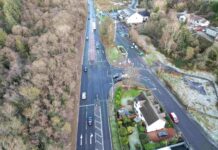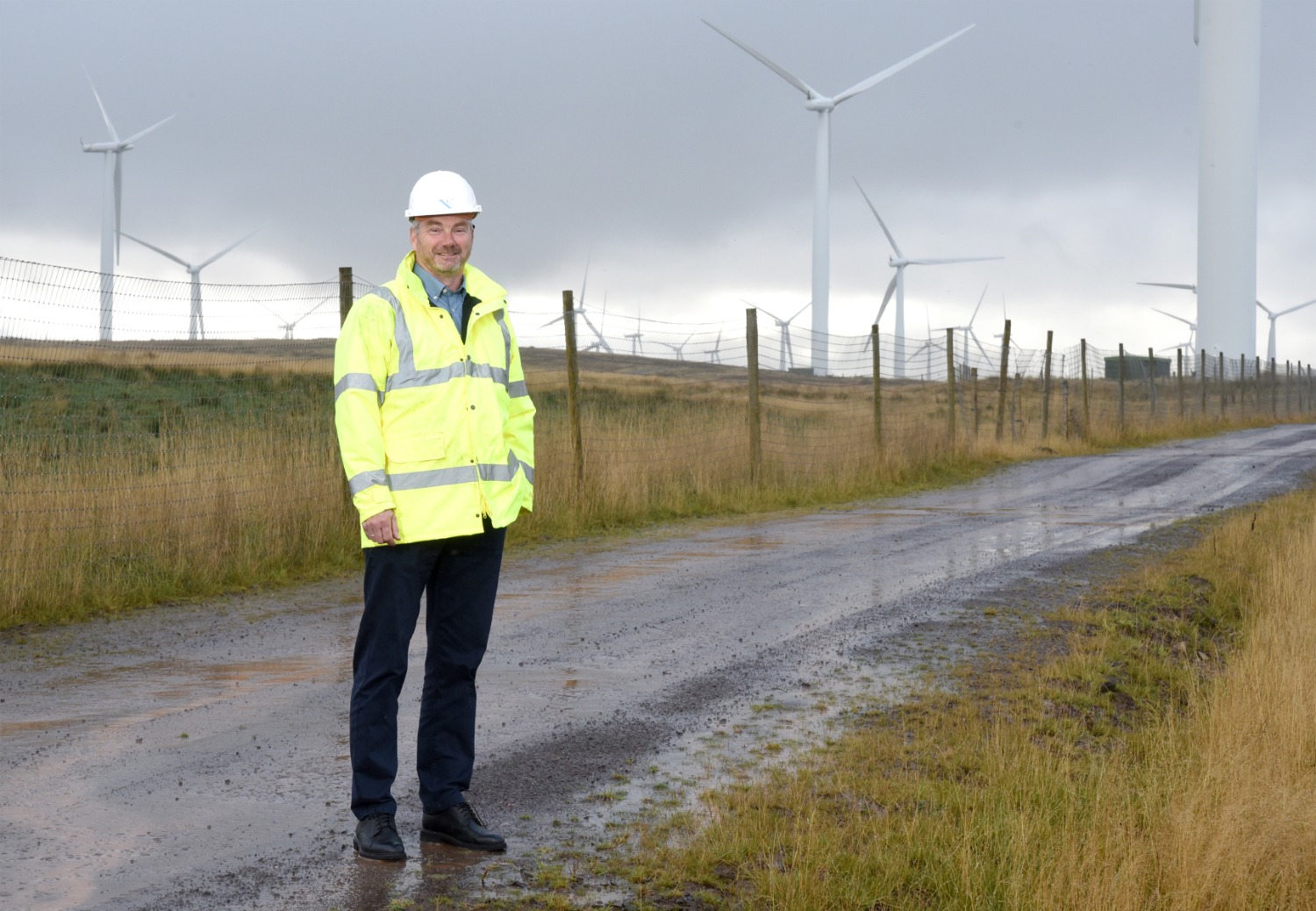
NORWEGIAN company Fred. Olsen Renewables has told of its ‘special relationship’ with Scotland as it approaches £1 billion of contracts being spent on Scottish businesses and work begins on the fourth extension of its flagship Crystal Rig Wind Farm in East Lothian.
Fred. Olsen Renewables, part of Fred. Olsen & Co. is controlled by the Olsen family, and has been involved in renewable energy since the mid-1990’s.
Crystal Rig is a 25-turbine development in the Lammermuir Hills which completed in 2003. Today, it boasts 95 turbines and produces enough electricity to power the equivalent of over 116,000 homes.
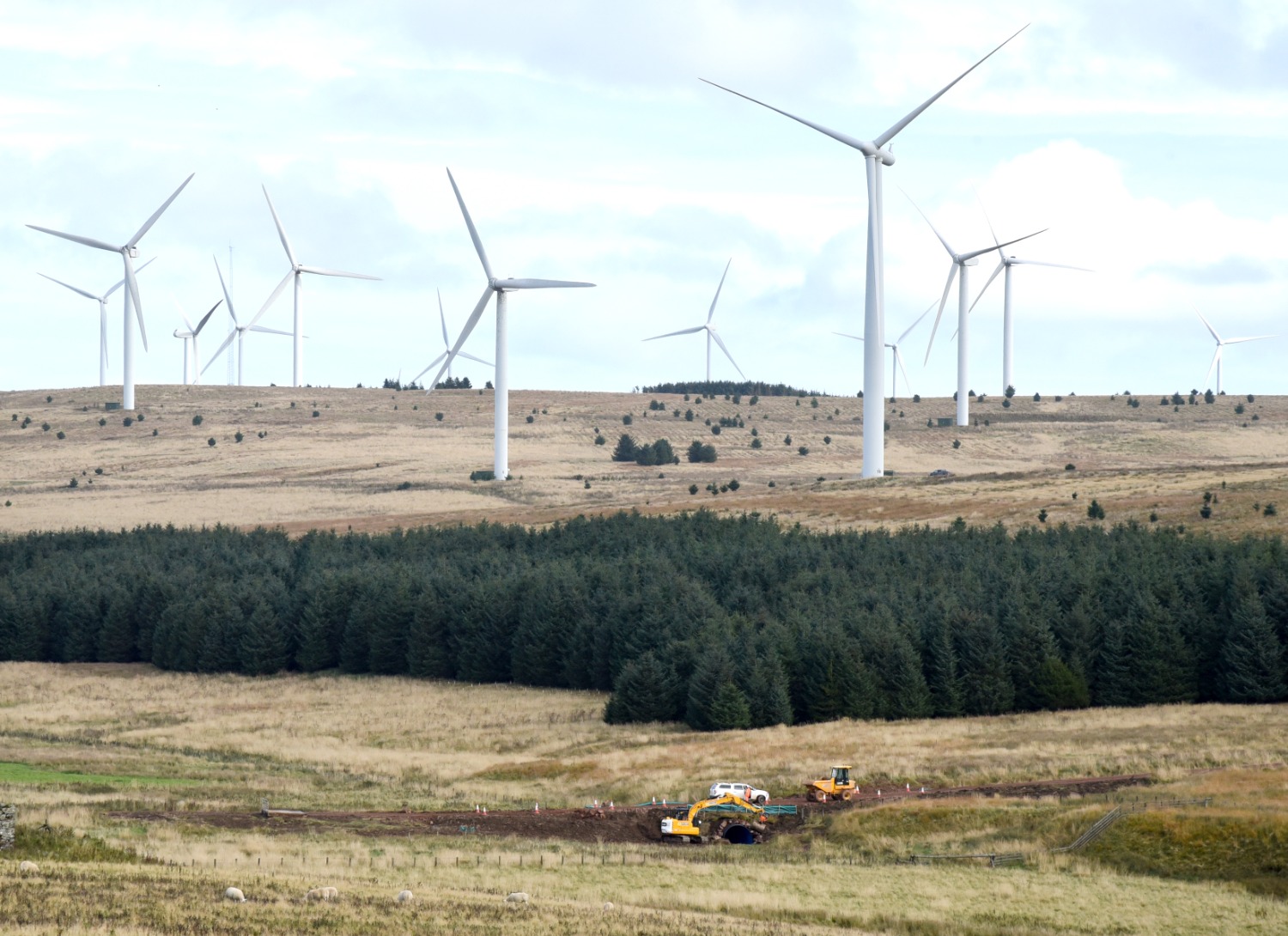
The ongoing work on its fourth extension is scheduled to conclude in 2026 and will boost its capability to power the equivalent of 200,000 homes. The addition of 11 turbines – with the largest standing at 174.5m tall – sees a requirement for visible aviation lighting. An earlier phase of Crystal Rig saw the design of a lighting scheme that addressed any fears that the lighting would be disruptive, when in reality it can only be seen when looking from directly above.
“We’ve been operating here since 2003 and one of the unique things about Fred. Olsen Renewables is that we have full-time staff on site to make sure the turbines are maintained, so they are as efficient as possible,” Finley Becks-Phelps, UK development director at Fred. Olsen Renewables told Project Scotland. “A lot of those, if not all, come from the local area – so it’s something we’ve always been in awe at in terms of what the local area has been able to bring into the original and current project.”
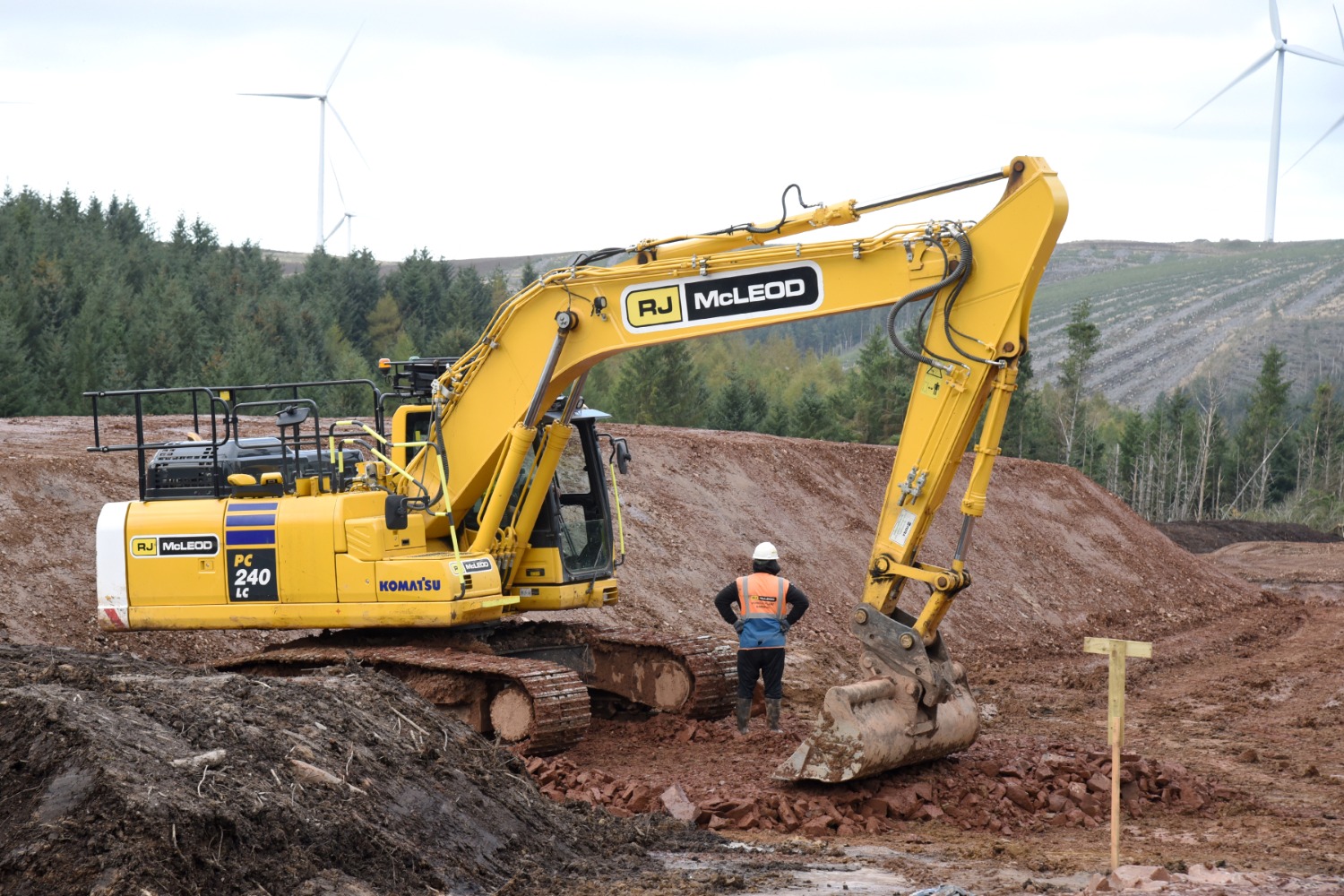
The business, which has wind farms in Sweden and Norway as well as elsewhere in Scotland, has a policy of prioritising contractors and employees based in the country in which projects are undertaken.
Glasgow-headquartered RJ McLeod is leading the build of Crystal Rig IV, with a tranche of local subcontractors, including L R Groundworks (Dunbar) and Midlothian Utilities (Dalkeith).
“Using local suppliers is a drive for the company. They have their local knowledge,” Ottar Cato Olsen, Fred. Olsen Renewables project manager explained. “They have been excavating in this kind of ground their whole life, so they know what to expect. If we can use local expertise and skills, then that’s perfect for us.”
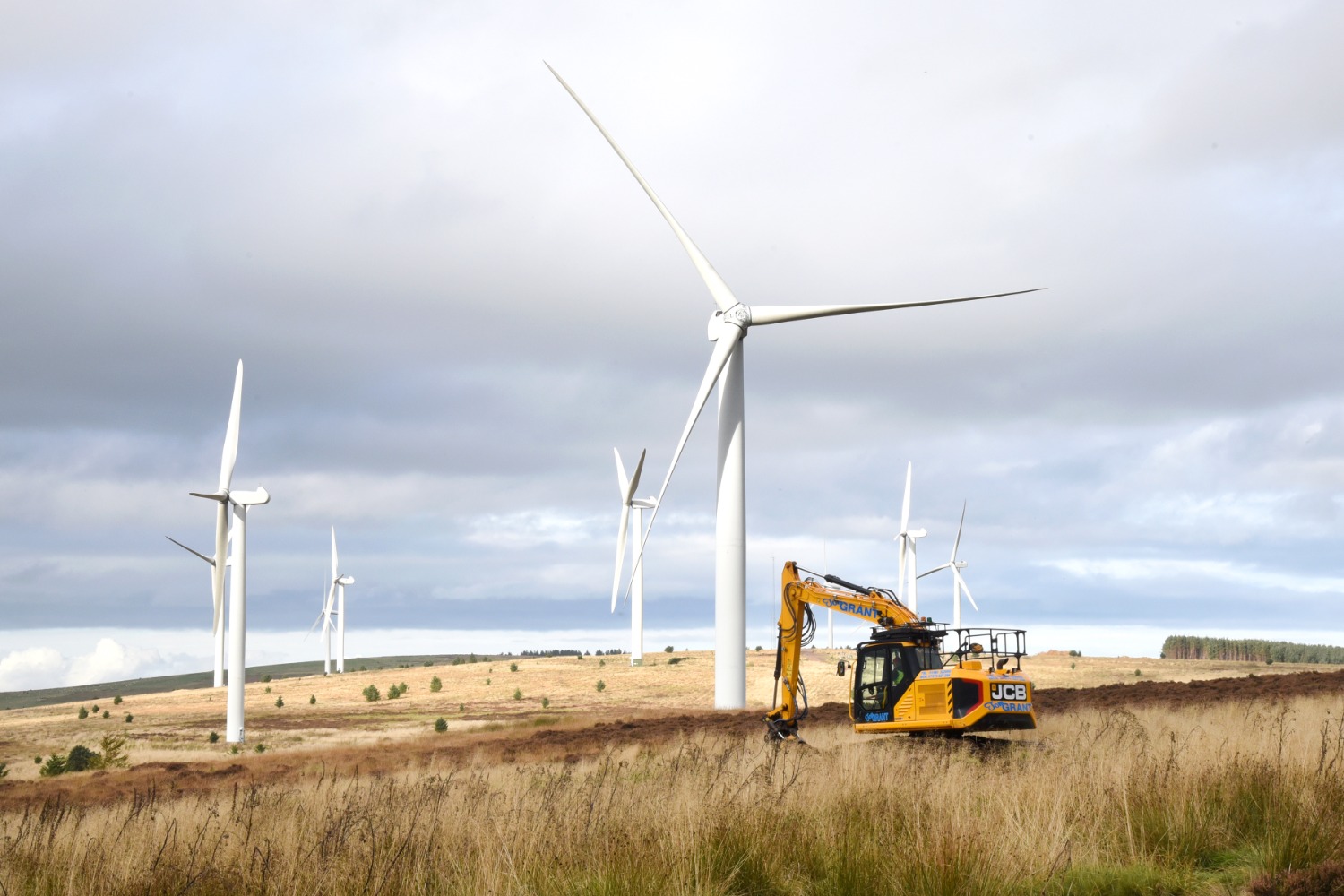
Explaining that the role of project manager elsewhere would commonly be given to an external person, Ottar said that it being someone from within Fred. Olsen Renewables forms part of its ownership philosophy – with it maintaining operation of the sites it builds.
“What we have done internally is build up a very competent base,” Finley added. “One of the great prides I have working within Fred. Olsen Renewables is that the team has been here for many years – people don’t tend to move on, and you build a very specific knowledge within that team that helps deliver these projects.”
A further benefit is that it allows for learnings from the approach to construction from contractors in the likes of Italy, Sweden, and Norway to be applied to Scottish projects and vice versa. Ottar heralded Scotland as being ‘ahead’ of the rest of the world in terms of grid compliance, which he said has already aided the business in its Swedish operations.
Alongside this is Scotland’s approach to the animals and wildlife found on site. Crystal Rig sits on active sheep and cow farmland, with both the farmer and an outside ecological clerk of works concluding that neither the ongoing construction work or active wind farm are impacting the animals. The findings are set to be presented to the Norwegian Government with the hope being that it leads to a less restrictive approach to works being undertaken near reindeers and other animals in that part of the world.
Fred. Olsen Renewables has appointed a Planning Monitoring Officer (PMO), an outside body, to monitor the site, which submits monthly reports to the Scottish Government and East Lothian Council confirming that consent requirements and rules and regulations are being met.
The business took the pioneering approach of investing in local initiatives at a time when community benefits were not yet a requirement in such large-scale projects.
“Our first consented project was also the first in Scotland and it was the first project to deliver community benefit, albeit slightly less in comparison to what we provide today.” Finley added. “But the principles of it were the same – for local communities to benefit from having a renewable energy project in their area.”
Today, the firm works directly with local community groups and organisations to hone its benefits to that community’s needs. A 2024 Stantec report revealed Fred. Olsen Renewables will distribute £14.6 million to Scottish communities during the lifetime of its current operational wind farms. This will substantially increase once its pipeline projects are brought forward.
“When you begin to work with the community and find what drives them, you can make much more tangible links between that value and what they can do with it,” Finley explained. “I think by doing so it leads to exciting conversations, and you get to see communities benefit very differently.”
The team attend regular meetings with the local community, with the duo explaining the importance of ensuring residents know the faces of those making decisions and have confidence that they can reach out with any issues. During Project Scotland’s visit, much of the work was centred around tree felling of commercial forestry and the creation of site roads and crane pads in preparation for the transportation of the turbines, with borrow pits also beginning to be created. Being a naturally silty site, special care is taken to ensure silt doesn’t enter the River Tweed – with both the ecological clerk of works and PMO reporting good progress on this front.
Over the winter months, the potential for heavy rain, snow and ice can make the onsite road conditions challenging. Preparations for these conditions are essential and requires local knowledge to ensure safe operations can continue on site.
Once out of the winter months, components are anticipated to begin being transported in June, with site roads and crane pads scheduled to be finalised shortly before them, with alterations also made to public roads including the addition of a top layer to ensure protection. By August, the erection of turbines will begin, with it hoped to be operational in early 2026.
Project Scotland intends to follow the project throughout, with regular site visits being scheduled to hear directly from various members on the project team on how works are progressing.









